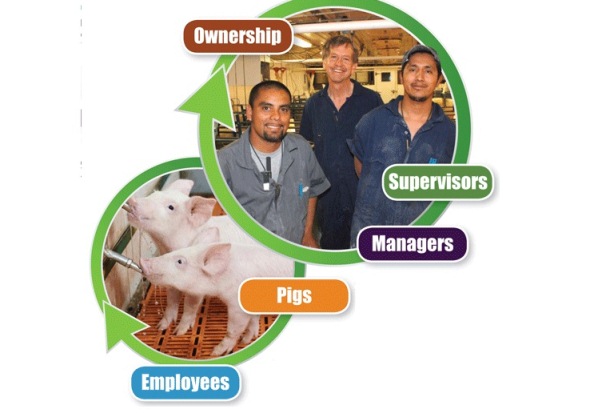It is a bigger circle than you think.
February 21, 2014

In recent years the U.S. swine industry has been plagued by organizations which make it their primary business to film swine production workers in unflattering, and sadly sometimes illegal, behavior during their interactions with pigs. These often inaccurate and unfair portrayals of swine employees unfortunately distract from our industry’s desire to provide world-class environments in which pigs can grow and thrive. However, the videos do have their intended effect, of driving donations to these organizations and thereby funding future activities of the same nature. In every way, these organizations serve as a classic parasite, with their host being the U.S. swine industry.
Our industry has reacted in an appropriate manner by making sure that employees are trained properly, and initiating standardized training programs. Some have even tried to pass laws making it illegal to record production practices without prior permission. These actions have been well-intentioned and well-funded, and they are a good starting point.
It is, however, my opinion that there is something missing from these initiatives. We must realize that getting employees to care for, and about, the pigs is more complex than simply providing educational information on the welfare needs of pigs, and then telling them that it is the right thing to do. In fact, if education were the only solution, then problems such as smoking or excessive sugar consumption (which can lead to illnesses such as diabetes) could quickly be solved simply by informing people that these behaviors are harmful and can ultimately result in outcomes that are life-threatening.
It is my opinion that the path of behavioral change is through the emotional aspect of people. In other words, when people (i.e., employees) are affected emotionally, rather than just intellectually, there is a good chance that desired behaviors (i.e., caring for pigs) will be implemented.
Like what you’re reading? Subscribe to the National Hog Farmer Weekly Preview newsletter and get the latest news delivered right to your inbox every week!
What would this look like? I believe we need to realize that people will appropriately care for pigs when they are emotionally engaged in this process. However, looking across all industries, employees who are emotionally engaged in their work is not common, with statistics showing that as few as 20% of workers are. This is very discouraging when you consider that emotionally engaged workers are the core element of a successful business.
So what would cause swine workers to emotionally engage? At the risk of oversimplifying the discussion, I would like to introduce the diagram shown above, which I have termed “The Caring Circle.” This circle begins at the top where owners, by their actions, demonstrate that they care for the supervisors in their organizations. This care is then passed down by supervisors as they care for and meet the emotional and intellectual needs of managers.
These managers, engaged and motivated by their supervisors, repeat these behaviors with their employees, and the employees become emotionally engaged in their animal husbandry activities. Pigs thrive under these caring behaviors. Once the pigs are thriving, financial rewards follow, and ultimately this results in the owners continuing the cycle.
I believe that this model will result in appropriate care for the pigs, as well as those who care for them. Unfortunately, it seems that the message we hear is that we need to focus just on the employees, when it is really the actions of the owners, supervisors, and managers which determine whether appropriate animal care occurs.
This is, unfortunately, a controversial statement because it assumes that if there are behavioral problems at the employee level, they are actually being propagated by inappropriate behaviors at the top of an organization. Any study of leadership would reveal that if you want to make lasting changes, you need to work with the leaders, not with the followers.
It is my opinion that there has been too much focus on changing employees and not enough focus on making the changes start at the top. I would welcome feedback on this opinion.
You might also like these stories:
The Ultimate Swine Leadership Challenge
Research Focuses on Attended Farrowings, Importance of Colostrum Intake
Top Ten Tips for Attended Farrowings
You May Also Like



